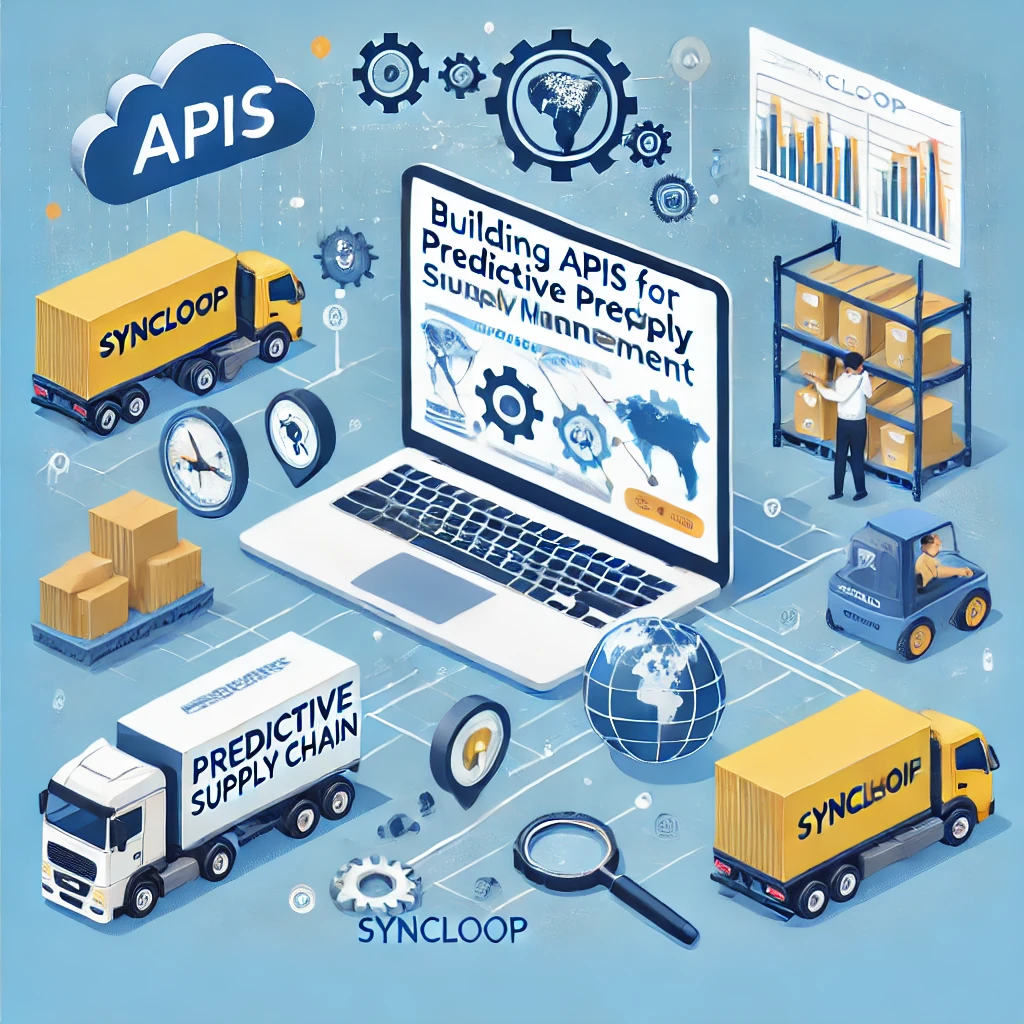Building APIs for Predictive Supply Chain Management with Syncloop

Syncloop provides robust tools for building APIs tailored to predictive supply chain management. With features like dynamic data mapping, real-time processing, and workflow automation, Syncloop simplifies the development and optimization of these APIs. This blog explores how Syncloop empowers predictive supply chain management and shares best practices for building scalable and intelligent APIs.
The Role of APIs in Predictive Supply Chain Management
APIs enable predictive supply chain systems to:
- Integrate Diverse Data Sources: Aggregate data from IoT sensors, ERP systems, and external sources like weather forecasts or market trends.
- Enable Real-Time Analytics: Process data instantly to support demand forecasting and risk mitigation.
- Facilitate Automation: Automate workflows such as inventory replenishment and route optimization.
- Enhance Collaboration: Enable seamless communication between suppliers, logistics providers, and other stakeholders.
- Optimize Decision-Making: Deliver actionable insights to improve efficiency and reduce costs.
Challenges in Building Predictive Supply Chain APIs
- Data Volume and Variety Handling large volumes of structured and unstructured data from multiple sources.
- Real-Time Processing Ensuring low-latency data analysis and decision-making.
- Integration Complexity Connecting APIs to legacy systems and modern platforms seamlessly.
- Scalability Supporting growing data volumes and user demands as supply chains expand.
- Data Security Protecting sensitive supply chain information from unauthorized access.
How Syncloop Simplifies API Development for Predictive Supply Chains
Syncloop offers tools and features tailored for supply chain applications:
- Dynamic Data Mapping Normalize and transform data for seamless integration across systems.
- Real-Time Processing Handle high-frequency data streams from IoT devices, sensors, and applications.
- Workflow Automation Automate key processes like inventory updates, demand forecasting, and risk alerts.
- Scalable Architecture Support large-scale data integration and analytics with dynamic resource allocation.
- Advanced Security Protect data with encryption, access controls, and real-time monitoring.
- Custom Dashboards Visualize supply chain metrics and trends with configurable dashboards.
Steps to Build Predictive Supply Chain APIs with Syncloop
Step 1: Define Use Cases
Identify the key functionalities for your supply chain API, such as:
- Demand forecasting based on historical data and market trends.
- Real-time tracking of shipments and inventory levels.
- Risk assessment and mitigation for disruptions or delays.
Step 2: Integrate Data Sources
Use Syncloop to connect and aggregate data from:
- IoT sensors for tracking shipments and warehouse conditions.
- ERP systems for inventory and order management.
- External APIs for weather, traffic, and market insights.
Step 3: Automate Workflows
Leverage Syncloop’s workflow automation tools to:
- Trigger inventory replenishment based on demand forecasts.
- Alert stakeholders of potential risks or delays.
- Optimize delivery routes in real time using traffic and weather data.
Step 4: Enable Real-Time Analytics
Configure Syncloop to:
- Process data streams instantly to identify trends and anomalies.
- Deliver predictive insights via API endpoints.
- Integrate analytics with dashboards for easy visualization.
Step 5: Secure API Interactions
Implement Syncloop’s security features to:
- Encrypt sensitive supply chain data during transmission and storage.
- Authenticate API users with tokens and role-based access controls.
- Monitor for unauthorized access or unusual activity.
Step 6: Monitor and Optimize
Use Syncloop’s monitoring tools to track:
- API performance metrics like latency and throughput.
- Workflow efficiency and data processing times.
- Anomalies or bottlenecks in the system.
Best Practices for Predictive Supply Chain APIs
- Adopt Modular API Design Build APIs with modular endpoints for flexibility and scalability.
- Optimize for Real-Time Processing Prioritize low-latency data handling for time-sensitive workflows.
- Enable Scalability Design APIs to handle increasing data volumes and user demands effortlessly.
- Ensure Robust Security Protect sensitive data with encryption, authentication, and compliance measures.
- Monitor Continuously Use real-time monitoring to detect and resolve issues proactively.
Example Use Case: Global Retailer Supply Chain
A global retailer uses Syncloop to enhance predictive supply chain management:
- Demand Forecasting: Analyzes historical sales and market trends to predict future demand.
- Real-Time Tracking: Monitors shipment locations and warehouse conditions via IoT sensors.
- Workflow Automation: Automates inventory replenishment based on predictive analytics.
- Risk Mitigation: Alerts stakeholders of potential disruptions due to weather or supply delays.
- Custom Dashboards: Provides real-time insights into supply chain performance for decision-makers.
Benefits of Using Syncloop for Predictive Supply Chain APIs
- Enhanced Efficiency: Automate repetitive workflows to save time and resources.
- Improved Scalability: Handle growing data volumes and supply chain complexity with ease.
- Real-Time Insights: Deliver actionable intelligence for proactive decision-making.
- Better Collaboration: Facilitate seamless communication between supply chain stakeholders.
- Secure Operations: Protect sensitive data with advanced security features.
The Future of Predictive Supply Chain Management
As supply chains become more complex and data-driven, predictive capabilities will be essential for optimizing performance and minimizing risks. Syncloop equips developers with the tools to build APIs that drive smarter, faster, and more reliable supply chain operations.
Image Description
A conceptual illustration showcasing Syncloop’s tools for predictive supply chain management APIs, featuring real-time data processing, workflow automation, and scalable architecture. The image highlights seamless integration and proactive decision-making for modern supply chains.
Back to Blogs